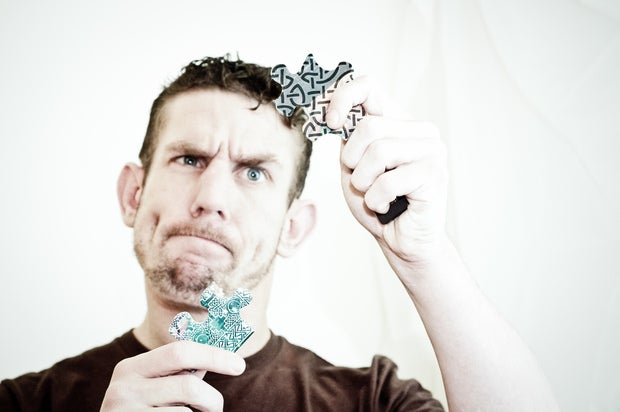So you are a User Experience Designer… part I
It’s one of those nights, my friends drag me out of my lair and drinks are in order. A new face joins the group, a friend of a friend. “So, what do you do?” she asks. The moment I dread. User experience, every time I use those words people who are not familiar with them are looking at me with fear and awe. When I say that this is my profession, I could have said that I am a molecular nuclear painter, most people would have the same level of understanding in their eyes.
 photo by Peter Grifoni
photo by Peter Grifoni
It’s only when I start to explain that User Experience is all about caring for the user, what he wants, what his needs are, that people start to relate and understand that whatever it is that I am doing I am doing it for them. I tell them that UX starts before the user even thinks about doing something online or offline and it should never end as long as the product and/or service exists and is available for consumption. By then I got them hypnotized or at least yawning.
People are ready to accept that there is a technical side in design, but apparently the notion of caring about one’s digital feelings is complicating things. Essentially that is what we U X designers do: we care about how users feel on their way to achieve their goal. We care about them having a seamless fulfilling experience and be happy when they are done with it. He keeps using our application because he chooses to. I fact the greatest Honour of all for every user experience designer would be for a User to be so content with an application/service/experience that he wants to recommend it to someone else.
The next thing people usually ask is what do you study to become a user experience designer? The notion of caring looks now pretty simple. All one has to do to design experiences is to pay attention to details and to the User. We all know an application or two that suck and we are sure we know what needs fixing, so the question now is how can one do that on his own – it seems pretty easy. I can tell you that user experience is not rocket science, or Rocket Surgery in the words of Steve Krug. it’s not about keeping in mind millions of patterns and memorizing what other people have designed. It’s not project management, product management or creating beautiful imagery on a blank canvas.
 photo by CarbonNYC
photo by CarbonNYC
User experience is about putting the pieces of a wobbly puzzle together. Its combining neuroscience with marketing, social skills, design, psychology and industrial design. A UX designer must not be expert at all of these areas simultaneously, he sure has to know all needed from each of these areas to solve the puzzle. Still, the most important and usually the hardest part of user experience design is what is known as requirements gathering. Meeting with the stakeholders, the people who will sign your paycheck, who you want to please but at the same time they are most possibly not your end users, who you also want to please. You can understand that there is a certain level of complexity in trying to design something for your users but at the same time you have to achieve what your stakeholders want you to. Its like being bigamous, keeping both homes happy! The only way you can achieve that is that you make sure that you get every single detail you need for both of those groups/wives so that you can understand what will make them happy. Time is not on your side as you usually have to do that in a matter of weeks or even days. We are talking about happiness which is not quantifiable by default. That means that during this process the UX designer must also quantify those things that will make Users and Stakeholders happy. Remember, he will only get his paycheck if he can show the numbers that prove that what was promised has been delivered.
Good luck with trying to extract information from stakeholders and guide them to setting requirements that are not directly related to an existing product. Its like trying to describe a new movie based on old ones. “Its like ET meets Matrix meets James Bond”. Imagine talking to a group of people who are all social media users and they want to create an application for connecting shoppers in a huge Mall. The moment the words social media were mentioned you were thinking of a certain multi billion user network. An integral part of the UX designer job is to figure out a way to take stakeholders out of whatever mental prison they are in and make them express their real needs rather than giving direct design orders for the final product. Because requirements gathering starts at the infancy of a project, Stakeholders are prone to common baby UX design diseases like Solutionosis, Frankestainia and Featuritis. We can talk more about these on another post…





